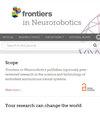Deep reinforcement learning navigation via decision transformer in autonomous driving
IF 2.6
4区 计算机科学
Q3 COMPUTER SCIENCE, ARTIFICIAL INTELLIGENCE
引用次数: 0
Abstract
In real-world scenarios, making navigation decisions for autonomous driving involves a sequential set of steps. These judgments are made based on partial observations of the environment, while the underlying model of the environment remains unknown. A prevalent method for resolving such issues is reinforcement learning, in which the agent acquires knowledge through a succession of rewards in addition to fragmentary and noisy observations. This study introduces an algorithm named deep reinforcement learning navigation via decision transformer (DRLNDT) to address the challenge of enhancing the decision-making capabilities of autonomous vehicles operating in partially observable urban environments. The DRLNDT framework is built around the Soft Actor-Critic (SAC) algorithm. DRLNDT utilizes Transformer neural networks to effectively model the temporal dependencies in observations and actions. This approach aids in mitigating judgment errors that may arise due to sensor noise or occlusion within a given state. The process of extracting latent vectors from high-quality images involves the utilization of a variational autoencoder (VAE). This technique effectively reduces the dimensionality of the state space, resulting in enhanced training efficiency. The multimodal state space consists of vector states, including velocity and position, which the vehicle's intrinsic sensors can readily obtain. Additionally, latent vectors derived from high-quality images are incorporated to facilitate the Agent's assessment of the present trajectory. Experiments demonstrate that DRLNDT may achieve a superior optimal policy without prior knowledge of the environment, detailed maps, or routing assistance, surpassing the baseline technique and other policy methods that lack historical data.自动驾驶中通过决策转换器进行深度强化学习导航
在现实世界中,为自动驾驶做出导航决策需要一系列连续的步骤。这些判断是基于对环境的部分观察做出的,而环境的基本模型仍是未知的。解决此类问题的一种普遍方法是强化学习,在强化学习中,除了零碎和嘈杂的观察之外,代理还通过连续的奖励来获取知识。本研究介绍了一种名为 "通过决策转换器进行深度强化学习导航"(DRLNDT)的算法,以解决在部分可观测的城市环境中运行的自动驾驶汽车在增强决策能力方面所面临的挑战。DRLNDT 框架围绕软行为批判(SAC)算法构建。DRLNDT 利用变压器神经网络对观察和行动中的时间依赖性进行有效建模。这种方法有助于减少由于给定状态下的传感器噪声或闭塞而可能产生的判断错误。从高质量图像中提取潜向量的过程涉及变异自动编码器(VAE)的使用。这种技术能有效降低状态空间的维度,从而提高训练效率。多模态状态空间由矢量状态组成,包括速度和位置,车辆的固有传感器可随时获取这些状态。此外,还加入了从高质量图像中提取的潜在向量,以方便 Agent 评估当前轨迹。实验证明,DRLNDT 可以在不事先了解环境、详细地图或路由辅助的情况下实现卓越的最优策略,超越了基线技术和其他缺乏历史数据的策略方法。
本文章由计算机程序翻译,如有差异,请以英文原文为准。
求助全文
约1分钟内获得全文
求助全文
来源期刊

Frontiers in Neurorobotics
COMPUTER SCIENCE, ARTIFICIAL INTELLIGENCER-ROBOTICS
CiteScore
5.20
自引率
6.50%
发文量
250
审稿时长
14 weeks
期刊介绍:
Frontiers in Neurorobotics publishes rigorously peer-reviewed research in the science and technology of embodied autonomous neural systems. Specialty Chief Editors Alois C. Knoll and Florian Röhrbein at the Technische Universität München are supported by an outstanding Editorial Board of international experts. This multidisciplinary open-access journal is at the forefront of disseminating and communicating scientific knowledge and impactful discoveries to researchers, academics and the public worldwide.
Neural systems include brain-inspired algorithms (e.g. connectionist networks), computational models of biological neural networks (e.g. artificial spiking neural nets, large-scale simulations of neural microcircuits) and actual biological systems (e.g. in vivo and in vitro neural nets). The focus of the journal is the embodiment of such neural systems in artificial software and hardware devices, machines, robots or any other form of physical actuation. This also includes prosthetic devices, brain machine interfaces, wearable systems, micro-machines, furniture, home appliances, as well as systems for managing micro and macro infrastructures. Frontiers in Neurorobotics also aims to publish radically new tools and methods to study plasticity and development of autonomous self-learning systems that are capable of acquiring knowledge in an open-ended manner. Models complemented with experimental studies revealing self-organizing principles of embodied neural systems are welcome. Our journal also publishes on the micro and macro engineering and mechatronics of robotic devices driven by neural systems, as well as studies on the impact that such systems will have on our daily life.
 求助内容:
求助内容: 应助结果提醒方式:
应助结果提醒方式:


